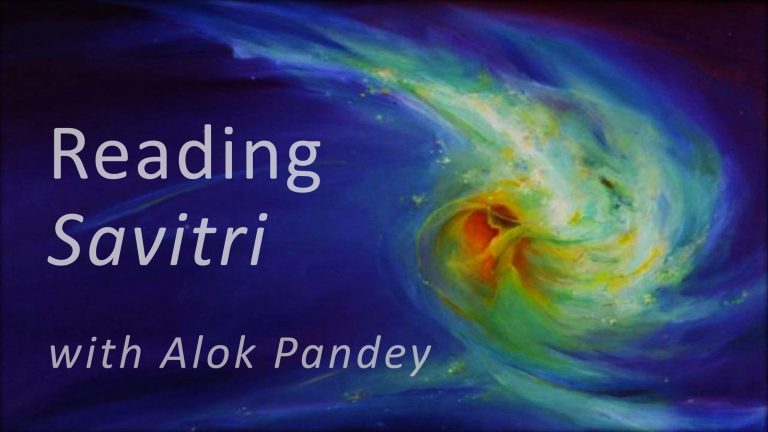Why is modern art so ugly?
I believe the chief reason is that people have become more and more lazy and do not want to work. They want to produce something before having worked, they want to know before having studied and they want to make a name before having done anything good. So, this is the open door for all sorts of things, as we see… Naturally, there are exceptions.
I have known artists who were great artists, who had worked hard and produced remarkable things, classical, that is, not ultramodern. But they were not in fashion because, precisely, one had not to be classical. When a brush was put in the hands of an individual who had never touched a brush, and when a brush was put on a palette of colours and the man had never touched a palette before, then if this individual had in front of him a bit of canvas on an easel and he had never done a picture before, naturally he daubed anything at all; he took the colours and threw them in a haphazard way; then everybody cried out “Admirable!”, “Marvellous!”, “It is the expression of your soul!”, “How well this reveals the truth of things!”, etc. This was the fashion and people who knew nothing were very successful. The poor men who had worked, who knew their art well, were not asked for their pictures any longer; people said, “Oh! this is old-fashioned, you will never find customers for such things.” But, after all, they were hungry, you see, they had to pay their rent and buy their colours and all the rest, and that is costly. Then what could they do? When they had received rebuffs from the picture-dealers who all told them the same thing, “But try to be modern, my friend; look here, you are behind the times”, as they were very hungry, what could they do?… I knew a painter, a disciple of Gustav Moreau; he was truly a very fine artist, he knew his work quite well, and then… he was starving, he did not know how to make both ends meet and he used to lament. One day, a friend intending to help him, sent a picture-dealer to see him. When the merchant entered his studio, this poor man told himself, “At last! here’s my chance”, and he showed him all the best work he had done. The art-dealer made a face, looked around, turned over things and began rummaging in all the corners; and suddenly he found… Ah! I must explain this to you, you are not familiar with these things: a painter, after his day’s work has at times some mixed colours left on his palette; he cannot keep them, they dry up in a day; so he always has with him some pieces of canvas which are not well prepared and which he daubs with what are called “the scrapings of palettes” (with supple knives he scrapes all the colours from the palette and applies them on the canvases) and as there are many mixed colours, this makes unexpected designs. There was in a corner a canvas like that on which he used to put his palette-scrapings. The merchant suddenly falls upon that and exclaims, “Here you are! my friend, you are a genius, this is a miracle, it is this you should show! Look at this richness of tones, this variety of forms, and what an imagination!” And this poor man who was starving said shyly, “But sir, these are my palette-scrapings!” And the art-dealer caught hold of him: “Silly fool, this is not to be told!” Then he said, “Give me this, I undertake to sell it. Give me as many of these as you like; ten, twenty, thirty a month, I shall sell them all for you and I shall make you famous.” Then, as I told you, his stomach was protesting; he was not happy, but he said, “All right, take it, I shall see.” Then the landlord comes to demand his rent; the colour-man comes demanding payment of the old bill; the purse is quite empty, and what is to be done? So though he did not make pictures with palette-scrapings, he did something which gave the imagination free play, where the forms were not too precise, the colours were all mixed and brilliant, and one could not know overmuch what one was seeing; and as people did not know very much what they saw, those who understood nothing about it exclaimed, “How beautiful it is!” And he supplied this to his art-dealer. He never made a name for himself with his real painting, which was truly very fine (it was really very fine, he was a very good painter), but he won a world reputation with these horrors! And this was just at the beginning of modern painting, this goes back to the Universal Exhibition of 1900; if I were to tell you his name, you would all recognise it…. Now, of course, they have gone far beyond, they have done much better. However, he had the sense of harmony and beauty and his colours were beautiful. But at present, as soon as there is the least beauty, it won’t do at all, it has to be outrageously ugly, then that, that is modern!
The story began with… the man who used to do still-life and whose plates were never round… Cézanne! It was he who began it; he said that if plates were painted round that would not be living; that when one looks at things spontaneously, never does one see plates round: one sees them like this (gesture). I don’t know why, but he said that it is only the mind that makes us see plates as round, because one knows they are round, otherwise one does not see them round. It is he who began… He painted a still-life which was truly a very beautiful thing, note that; a very beautiful thing, with an impression of colour and form truly surprising (I could show you reproductions one day, I must be having them, but they are not colour reproductions unfortunately: the beauty is really in the colour). But, of course, his plate was not round. He had friends who told him just this, “But after all, why don’t you make your plate round?” He replied, “My dear fellow, you are altogether mental, you are not an artist, it is because you think that you make your plates round: if you only see, you will do it like this” (gesture). It is in accordance with the impression that the plate ought to be painted; it gives you an impact, you translate the impact, and it is this which is truly artistic. It is like this that modern art began. And note that he was right. His plates were not round, but he was right in principle.
What has made art what it is, do you want me to tell you this, psychologically?… it is photography. Photographers did not know their job and gave you hideous things, frightfully ugly, it was mechanical, it had no soul, it had no art, it was horrible. All the first attempts of photography until… not very long ago, were like that. It is about fifty years ago that it became tolerable, and now with gradual improvement it has become something good: but it must be said that the process is absolutely different. In those days, when your portrait was taken, you sat in a comfortable chair, you had to sit leaning nicely and facing an enormous thing with a black cloth, which opened like this towards you. And the man ordered, “Don’t move! Steady!” That, of course, was the end of the old painting. When the painter made something life-like, a life-like portrait, his friends said, “Why now, this is photography!”
It must be said that the art of the end of the last century, the art of the Second Empire, was bad. It was an age of businessmen, above all an age of bankers, financiers, and taste, upon my word, had gone very low. I don’t believe that businessmen are people necessarily very competent in art, but when they wanted their portrait, they wanted a likeness! One could not leave out the least detail, it was quite comic: “But you know I have a little wrinkle there, don’t forget to put it in!” and the lady who said, “You know, you must make my shoulders quite round”, and so on. So the artists made portraits which indeed turned into photography. They were flat, cold, without soul and without vision. I can name a number of artists of that period, it was truly a shame for art. This lasted till about the end of the last century, till about 1875. Afterwards, there started the reaction. Then there was an entire very beautiful period — I don’t say this because I myself was painting, but all the artists I then knew were truly artists, they were serious and did admirable things which have remained admirable. It was the period of the impressionists; it was the period of Manet, it was a beautiful period, they did beautiful things. But people tire of beautiful things as they tire of bad ones. So there were those who wanted to found the “Salon d’Automne”. They wanted to surpass the others, go more towards the new, towards the truly anti-photographic. And my goodness, they went a little beyond the limit (according to my taste). They began to depreciate Rembrandt — Rembrandt was a dauber, Titian was a dauber, all the great painters of the Italian Renaissance were daubers. You were not to pronounce the name of Raphael, it was a shame. And all the great period of the Italian Renaissance was “not worth very much”; even the works of Leonardo da Vinci: “You know, you must take them with a pinch of salt.” Then they went a little further; they wanted something entirely new, they became extravagant. And then, from there, there was only one more step to take for the palette-scrapings and then it was finished.
This is the history of art as I knew it.
Now, to tell you the truth, we are climbing up the curve again.
9 April 1951




About Savitri | B1C3-11 Towards Unity with God (pp.31-33)